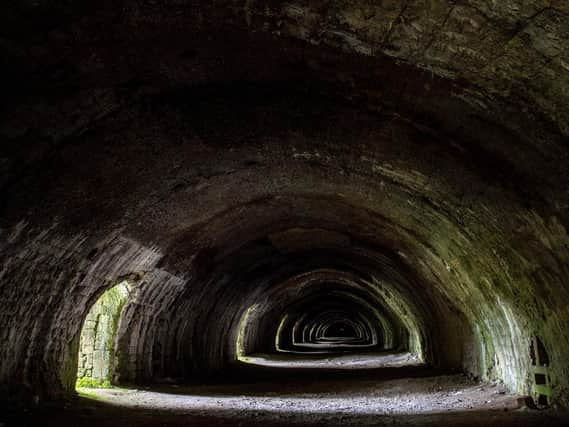Yorkshire's limestone quarry workers and the Hoffman Kiln
This article contains affiliate links. We may earn a small commission on items purchased through this article, but that does not affect our editorial judgement.


This impressive lime kiln is, you perhaps won’t be surprised to learn, one of the largest industrial heritage monuments in the Yorkshire Dales. The design was patented in 1858 by its German inventor Friedrich Hoffmann, and the Yorkshire version built in 1873 had 22 individual firing chambers.
The site was chosen because of its proximity to the Settle-Carlisle Railway and there were originally two companies working there – North Ribblesdale Limestone & Lime Works and the Craven Lime Works Ltd.
Advertisement
Hide AdAdvertisement
Hide AdThe limestone blocks were transported in pony-hauled carts from a quarry at Langcliffe Scar and stacked by hand inside the kiln. A lining of firebricks kept in the heat as the limestone was burned with crushed coal dropped through small chutes in the roof.
Once the chemical change in the limestone had occurred the blocks were broken up with picks and the powdered lime removed by shovels. It was sold to farmers as a fertiliser, to builders for use in mortar, and to local industries like tanning, textiles and paper making.
The Hoffmann Kiln closed in 1931 but was fired up one last time in 1939. It is now part of a designated conservation area.
The use of limestone goes much back much further than this, though. It has been burnt in fields for centuries in the Dales, and according to the Yorkshire Dales National Park the lime produced was used to ‘sweeten the local landscape.
Advertisement
Hide AdAdvertisement
Hide AdAs demand grew in the 19th century this is when these industrial-sized kilns were built. This site at Langcliffe is significant because it has examples of three types of lime kiln – a bank of three draw kilns, a Hoffmann kiln and a pair of Spencer kilns.
The Hoffman kiln is the best preserved in England and arguably the most impressive, and looking at this picture it’s not hard to see why.
Image technical details: Nikon D4 camera, 24-70mm Nikkor lens with an exposure of 1/5th second @ f6.3, ISO250.
For more stories from the YP Magazine and The Yorkshire Post features team, visit our Facebook page.
Advertisement
Hide AdAdvertisement
Hide AdEditor’s note: first and foremost - and rarely have I written down these words with more sincerity - I hope this finds you well.
Almost certainly you are here because you value the quality and the integrity of the journalism produced by The Yorkshire Post’s journalists - almost all of which live alongside you in Yorkshire, spending the wages they earn with Yorkshire businesses - who last year took this title to the industry watchdog’s Most Trusted Newspaper in Britain accolade.
And that is why I must make an urgent request of you: as advertising revenue declines, your support becomes evermore crucial to the maintenance of the journalistic standards expected of The Yorkshire Post. If you can, safely, please buy a paper or take up a subscription. We want to continue to make you proud of Yorkshire’s National Newspaper but we are going to need your help.
Postal subscription copies can be ordered by calling 0330 4030066 or by emailing [email protected]. Vouchers, to be exchanged at retail sales outlets - our newsagents need you, too - can be subscribed to by contacting subscriptions on 0330 1235950 or by visiting www.localsubsplus.co.uk where you should select The Yorkshire Post from the list of titles available.
Advertisement
Hide AdAdvertisement
Hide AdIf you want to help right now, download our tablet app from the App / Play Stores. Every contribution you make helps to provide this county with the best regional journalism in the country.
Sincerely. Thank you.
James Mitchinson